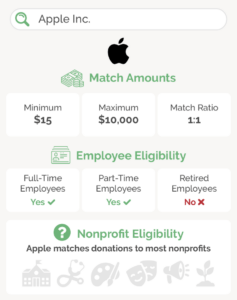Needing money is a common denominator among all nonprofits. We may serve different causes or operate in different areas of the world. However, we all need donations, and corporate giving is a reliable way to generate those funds.
Giving USA 2023 found that corporate giving totaled approximately $29.48 billion in just one year. It also estimates that corporate giving increased by 3.4% in 2022, making its growth faster than individual, foundation, and bequest giving.
With the rise of social impact as a business metric, companies are more eager than ever to contribute to meaningful causes, yet many nonprofits don’t make the most of this fundraising avenue. If you’re unsure which programs to pursue, consider this your guide. Let’s break down two of the most popular forms of corporate philanthropy: sponsorships and donations.
Understanding Corporate Sponsorships
Our sector loves the word sponsorship. Whether it’s sponsoring children, saving animals, or underwriting a golf outing or gala, we’re always pursuing sponsor support.
Sponsorships are based on reciprocity. When a company or individual sponsors an event or initiative, their contributions are usually made in exchange for marketing. These relationships are typically bound by a written agreement that states the benefits for both your nonprofit and the sponsor.
Benefits of Corporate Sponsorships
If your nonprofit hosts events or other big initiatives, sponsorships are a great option for both parties. Specifically, the benefits of corporate sponsorship for nonprofits include the following:
- You’ll increase visibility by associating your nonprofit’s brand with corporate partners.
- You’ll gain access to potential donors and volunteers, such as the business’s employees.
- The sponsor may receive promotional or fiscal benefits, making them loyal and engaged in the partnership.
- The quid-pro-quo nature of these relationships makes them more attractive to companies.
- Compared to donations, sponsorships require less intensive record-keeping for your nonprofit.
As you can imagine, the sponsor experiences some great benefits too, such as being seen as a socially responsible company among consumers and employees. Nonprofits Source’s corporate giving guide explains that sponsorships are best for launching lasting partnerships between your nonprofit and like-minded businesses.
Drawbacks of Corporate Sponsorships
While great for driving support and increasing visibility, corporate sponsorships also have their challenges:
- Sponsorships are usually tied to an event or program with production value and require a significant investment of time and energy.
- Sponsors may have unrealistic expectations related to how their brand is promoted.
- The need for substantial resources makes fulfilling sponsorship agreements challenging.
- A dependence on corporate interests may influence nonprofit agendas.
- Sponsors’ decisions may be driven by their wallets more than passion for your mission.
Sponsorships aren’t for every organization, but they can be great forms of support in the right context. Assess whether you have the resources to manage these relationships and fulfill obligations.
Understanding Corporate Donations
Corporate donations are contributions made by businesses to nonprofits without the expectation of promotion in return. These contributions are often motivated by corporate social responsibility goals. These types of gifts typically qualify as donations:
- Direct cash donations
- In-kind gifts, such as venue space, free goods, and services
- Matching gifts in which companies match employees’ charitable donations
- Volunteer grants in which companies give to nonprofits where employees volunteer
While companies experience perks from these gifts, these benefits don’t come directly from your nonprofit. For instance, matching gifts and volunteer grants allow companies to align their charitable giving with employees’ values, leading to greater employee retention and talent acquisition. Double the Donation’s employee engagement research found that 71% of employees believe it’s important to work for companies that give back, such as through matching gifts.
Benefits of Corporate Donations
Charitable donations enable companies to support your mission directly, leading to the following benefits for your organization and your corporate partner:
- A charitable donation doesn’t have expectations or demands. However, a donor may want to be informed about a program.
- Your nonprofit will receive flexible funding to support various activities.
- A charitable donation usually signifies that someone believes in your work.
- Companies can donate either with or without meeting a member of your team.
- The donor’s gift may be tax deductible. Of course, this is subject to tax laws.
Overall, this is a low-touch way for companies to support a cause they believe in without being overly involved.
Drawbacks of Corporate Donations
Here are some common challenges nonprofits face with corporate donations:
- These charitable contributions are typically unpredictable and unsolicited, making budgeting challenging.
- Since corporate donations are typically low-touch, corporate donors may not be engaged or committed to your organization.
- Similarly, retaining donors is a big challenge since it’s on your team to maintain the relationship.
- Donations provide limited exposure compared to sponsorships, making them harder to solicit.
- Record keeping for donations is more stringent than it is for sponsorships.
While great for raising funds, corporate donors can be challenging to acquire and retain. You’ll need to intentionally maintain these relationships just like a sponsorship.
Determining Whether A Corporate Contribution Is Tax Deductible
Not all contributions are the same in the eyes of your auditor or the IRS. While some gifts are charitable donations, others are technically non-charitable support.
When hosting a ticketed fundraising event, you’ve probably been asked for a receipt for the tickets. Then, you might have been asked why the receipt didn’t contain charitable tax receipt language. When someone receives a benefit for their “gift,” the IRS sees that as not tax deductible. For example, the “benefit” can be anything from promotion as the event’s title sponsor to a meal and entertainment.
Straight from IRS Topic #506: Charitable Contributions, here is the language that governs gifts to nonprofits:
“If you receive a benefit in exchange for the contribution such as merchandise, goods or services, including admission to a charity ball, banquet, theatrical performance, or sporting event, you can only deduct the amount that exceeds the fair market value of the benefit received or expected to be received.”
Determine Whether There’s Reciprocity
To test whether funds are a tax-deductible donation or a sponsorship, determine if reciprocity is involved. Your organization shouldn’t be required to provide anything other than gratitude and a tax receipt. If a “donor” requests specific actions, it probably won’t qualify as a charitable gift.
For instance, gifts given for commercial purposes, such as promotion, event access, or referrals, do not qualify as tax-exempt donations. Although their intent may be charitable, their execution disqualifies them from receiving charitable deduction benefits.
What about in-kind donations?
The same rules also apply to in-kind donations. However, the good news is that most businesses donate goods or services without expecting charitable deduction benefits. Their “benefit” regarding their taxes is realized in their cost of goods sold.
If a business (not an individual) gives your nonprofit free goods or services, this can be a donation or an exchange for sponsorship benefits. Either way, no charitable tax receipt is necessary. However, documentation and gratitude are highly recommended.
Sponsorships vs. Donations: Which Is Better?
In short, it depends on what type of support you’re looking for and what you can offer in return. The symbiotic, long-lasting nature of sponsorships makes them ideal for nonprofits that can provide ongoing promotional opportunities to their corporate partners. You’ll also want to consider what initiatives you have that lend themselves to sponsorship opportunities, such as events.
On the other hand, donations are best suited for organizations seeking flexible funding to support general operations or specific projects. This short-term support can help nonprofits without sufficient resources to promote the sponsor in return.
In essence, the choice between sponsorships and donations depends on your nonprofit’s objectives, capacity to deliver value to corporate partners, and preference for the type of relationship you wish to cultivate.
How Matching Gifts Give The Best of Both Worlds
Essentially, matching gift programs are corporate giving programs in which a company matches its employees’ donations to charitable organizations. This form of corporate philanthropy combines the benefits of sponsorships and donations. To fully understand this, you have to understand how matching donations work:
- An individual donor gives to your nonprofit.
- Using a matching gift search tool, they research their company’s program requirements.
- If their company has a program and the donation is eligible, they submit a matching gift request.
- The company confirms the donation with your nonprofit and sends a separate donation.
Typical requirements for these programs include a minimum or maximum gift amount, employment status, and the types of eligible nonprofits. Companies also match at different rates, such as by matching the original contribution dollar-for-dollar or donating twice as much.
These programs empower companies to align charitable giving with employees’ interests, employees to increase their impact, and your nonprofit to boost funds.
How Matching Gifts Act As Sponsorships and Donations
These programs act like sponsorships by publicly aligning the company with the causes their employees support, enhancing the business’s brand. Similar to traditional sponsorship agreements, they provide a structured avenue for companies to demonstrate their CSR commitment.
They also act as donations in that they serve as direct financial support by doubling individuals’ contributions. Like traditional corporate donations, they provide financial support with minimal strings attached.
To tap into this CSR program, promote the fundraising opportunity to donors and corporate partners. Look in your CRM to find donors who work for companies with these programs. Then, reach out to anyone who’s eligible. Post about the opportunity on social media, and embed a company search tool into your donation page. However you go about it, promoting matching gifts empowers you to leverage a unique corporate giving opportunity.
Conclusion
Choosing between seeking sponsorships and donations isn’t a matter of which is better, but which is right for your organization at a given time. By carefully evaluating your nonprofit’s needs and capabilities, you can leverage the unique advantages of each opportunity to boost impact. Whatever your approach, you’ll find the greatest success in aligning your mission with the right partners and opportunities, whether through sponsorships, donations, or both.








